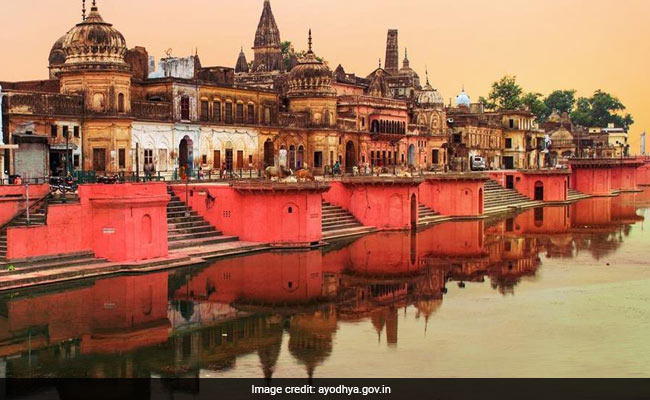
Seventy years after the first court case was filed in the dispute post-Independence, the Supreme Court today delivered a landmark verdict in the Babri Masjid-Ram Janambhoomi title suit. The disputed land will be given to a government-run trust for the building a temple and Muslims will be given a five-acre "suitable" plot in Ayodhya, a five-judge constitution bench said in a "unanimous verdict". The dispute, that has dominated the country's political discourse for decades, has seen many twists and turns and led to a series of court battles with various groups staking claim to the site in Uttar Pradesh's Ayodhya. An ancient mosque that stood there was razed in 1992 by Hindu activists who believe the site is the birthplace of Lord Ram, triggering riots that killed 2,000 people across the country.
Here is a 10-point timeline of the Ram Temple - Babri Masjid dispute:
The Babri Masjid was built in Ayodhya in 1528. Hindu groups claim it was built after demolishing a temple. In 1853, the first recorded communal clashes over the site took place. In 1859, the British administration put a fence around the site marking separate areas of worship for Hindus and Muslims, and it stood that way for nearly 90 years. The property dispute went to court for the first time in 1949 after idols of Lord Ram were placed inside the mosque.
In 1984, Hindu groups formed a committee to spearhead the construction of a Ram temple. Three years later, a district court ordered the gates of the mosque to be opened after almost five decades and allowed Hindus to worship inside the "disputed structure." A Babri Mosque Action Committee was formed by Muslim groups. In 1989, foundations of a temple were laid on land adjacent to the "disputed structure".
In 1990, the then BJP president LK Advani took out a cross-country rath yatra to garner support to build a Ram temple at the site. VHP volunteers partially damaged the Babri mosque.
On December 6, 1992, the mosque was demolished by Hindu activists. Communal riots across India followed. Ten days after the demolition, the Liberhan Commission was set to probe the incident. The Commission submitted its report on June 2009 - naming LK Advani, Atal Bihari Vajpayee and other BJP leaders - almost 17 years after it began its inquiry.
In September 2003, a court ruled that seven Hindu leaders, including some prominent BJP leaders, should stand trial for inciting the destruction of the Babri Mosque. But no charges were brought against Mr Advani who was then the Deputy Prime Minister. A year later, an Uttar Pradesh court ruled that the order which exonerated him should be reviewed.
The case against the BJP leaders, including Murli Manohar Joshi and Uma Bharti as well, is being heard by a trial court in Lucknow. In July this year, the Supreme Court extended the tenure of the judge hearing the case and set a nine-month deadline for the verdict.
In April 2002, a 3-judge Lucknow bench of the Allahabad High Court began hearings on determining who owned the site. In September 2010, the Allahabad High Court pronounced the verdict. The verdict said the site of Babri mosque is to be divided into three parts, each going to Nirmohi Akhara, Ram Lalla and the Sunni Central Waqf Board of Uttar Pradesh. Within months, Hindu groups and Muslim groups moved Supreme Court challenging the High Court verdict.
In 2011, the Supreme Court stayed the Allahabad High Court order. Not long before, the top court had said the Allahabad High Court verdict was strange and surprising.
After mediation proceedings by a Supreme Court-appointed three-member team failed to find an amicable solution to the dispute earlier this year, a five-judge constitution bench began day-to-day hearings on August 6.
The daily hearings at the Supreme Court came to an end after 40 days on October 16. The verdict was reserved and set to be declared before November 17, when Chief Justice Ranjan Gogoi, who is leading the five-judge constitution bench hearing the case, is slated to retire.

